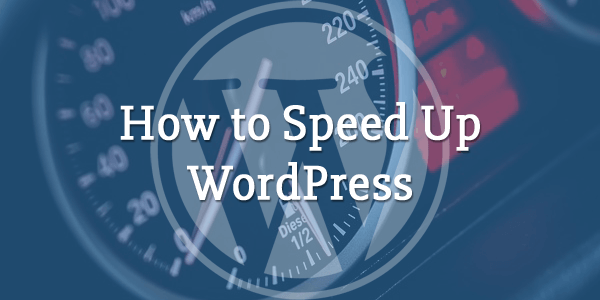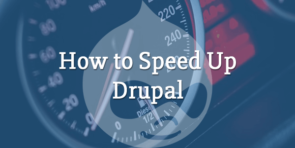
How to Speed up Your WordPress Website?
Website speed matters, and the reason why it does is twofold: it affects search engine ranking and it’s a crucial element of a good user experience. WordPress has plenty of advantages, but when it comes to speed, there is always room for improvement. In terms of page load times and performance, even milliseconds matter, especially in areas with fierce competition. When a user visits your site for the first time, speed is the first aspect they notice, only then comes everything else (design, usability, etc.). Speed, or lack thereof, can make or break your site on this first encounter, and it can do that in a matter of mere seconds.
Knowing how to speed up your WordPress site can help you deliver your users the performance they need or look for. Here is our take on how you can make your WordPress site faster:
- Use a good WordPress hosting service
Software tweaking is one way to go about optimizing site performance, but nothing quite compares with upping your hardware. A shared hosting may seem like a good idea at first, but as your site grows, you’ll need your hardware to keep up. Switching to a Dedicated Hosting, a VPS or a Managed WordPress Hosting are all viable options for high/medium traffic websites. A Managed WordPress Hosting is excellent for those whose technical skills are not up to par.
A hosting service that is certainly worth investing in is WPEngine, which boasts unmatched efficiency in speeding up your site.
- Cache your website with a plugin
Once you’re done with the hardware part, you can start tweaking the software elements. One fast way to improve your site’s performance is to install a caching plugin like WP3 Total Cache or WP Super Cache. Caching plugins store your WP posts and pages as static files and serve them to your users as such, which leads to a server load reduction. Setting up these can be a bit of a hassle and setting them up incorrectly will not get you the results you would expect.
- Optimize your images
Compared to text, images occupy more space and are a bigger strain on your server load. One way to optimize your images is to compress them by using plugins like WP Smush.it, EWWW Image Optimizer or Compress JPEG and PNG Images. They all automatically optimize images as you upload them, maintaining the perceivable quality of your images. Some image optimization plugins work even retroactively (e.g. WP Smush.it), compressing all images in your Media Library.
- Use only necessary plugins
WordPress is abundant with amazing plugins, and it certainly feels like there is plugin for everything. While some plugins are useful, not all are necessary, and having too many plugins can slow down your site. If you can decide on the spot which plugins to keep and which need to go, you don’t need a diagnostic tool, if not, you need a diagnostic plugin that can identify the plugins that are interfering with your site’s speed. Once you’re able to shed more light on this issue, you can decide whether to replace them or remove them.
- Use a CDN
Content delivery networks (CDN) are a sure-fire way to dramatically improve page-loading speed by serving your site’s static content (CSS, JavaScript, images, etc.) on servers that are geographically closest to your visitors. Your server will thus we able to serve dynamic content much faster, bandwidth usage will be reduced and high user traffic will be managed with flying colors. All these translate into a better user experience and better SEO positioning.
Integrating a CDN with your WordPress site can be easily done with the help of the same plugins you would use to cache your website (WP3 Total Cache or WP SuperCache). Top CDNs include Max CDN, Cloudflare and Amazon CloudFront.
What else can you do?
Mobile site/responsive theme
Make sure that you have a mobile version of your site or that your theme is responsive so that it loads fast even on smaller screens. While the points listed above are mostly concerned with page generation time (how much it takes for your server to generate the initial HTML, which then grabs other files like CSS, JS and images), it is also important to make sure that your site provides a snappy, fast, and smooth user experience. Achieving this can take quite a lot of time and/or money, but it definitely pays off on the long run. If your page load is not under 4 seconds or responsiveness is bad or otherwise slow, users will not think twice about hitting the back button and going to a faster site.
Remove the unnecessary
As with unnecessary plugins, make sure you also remove widgets that you’re not using. If, for example, you have some sharing widgets on your homepage, remove them and include them only in your posts.
LazyLoad
Lazy loading your images means that you delay the loading of images until the user actually scrolls to them, this can speed up your page load, and even save bandwidth by loading less data for those particular users who don’t scroll to the end of your pages.
There are several plugins that can help you lazy load your images or even your videos: jQuery Image Lazy Load, BJ Lazy Load, Lazy Load for Videos, etc.
Turn off pingbacks and trackbacks
Pingbacks and trackbacks are an alert mechanism used to notify other WP sites that your posts link to, and vice versa. These too can interfere with the speed of your page load, so you’re better off just turning them off.
Implementing all of the methods described above will result in a marked improvement in the speed of your WordPress site and lead to a better experience for users as well. Apart from reducing bounce rates and making the browsing experience for your users a more enjoyable affair, speed is also a mark of quality websites, which search engines will reward by positioning your site better compared to a slower, albeit qualitatively comparable site.







